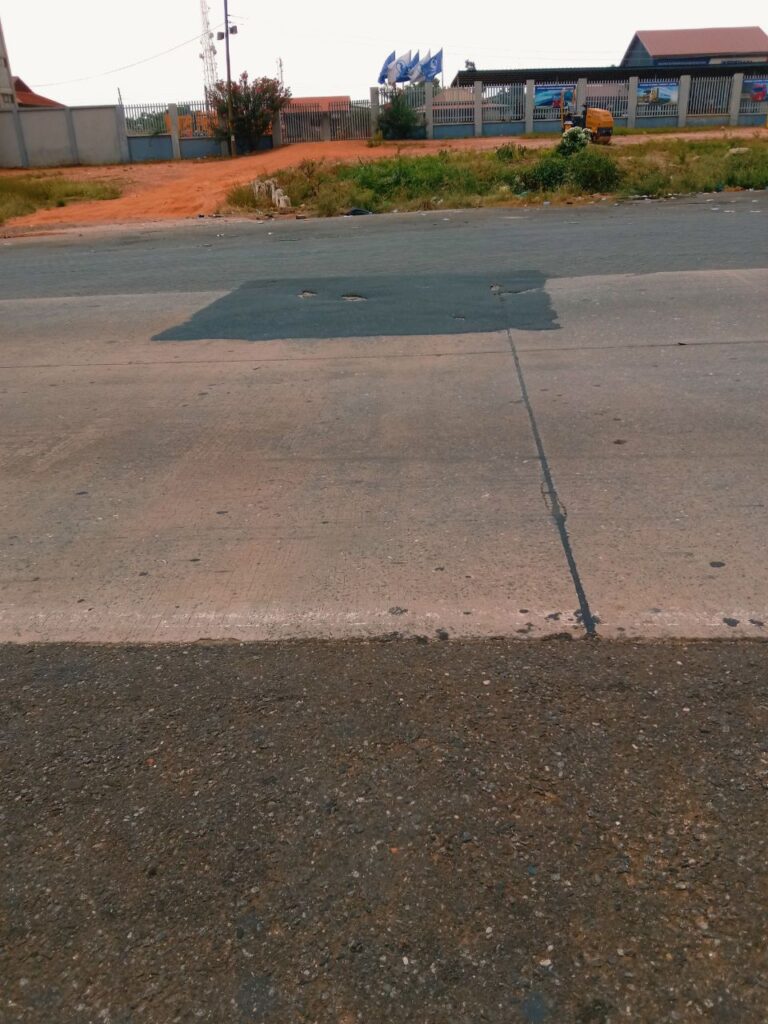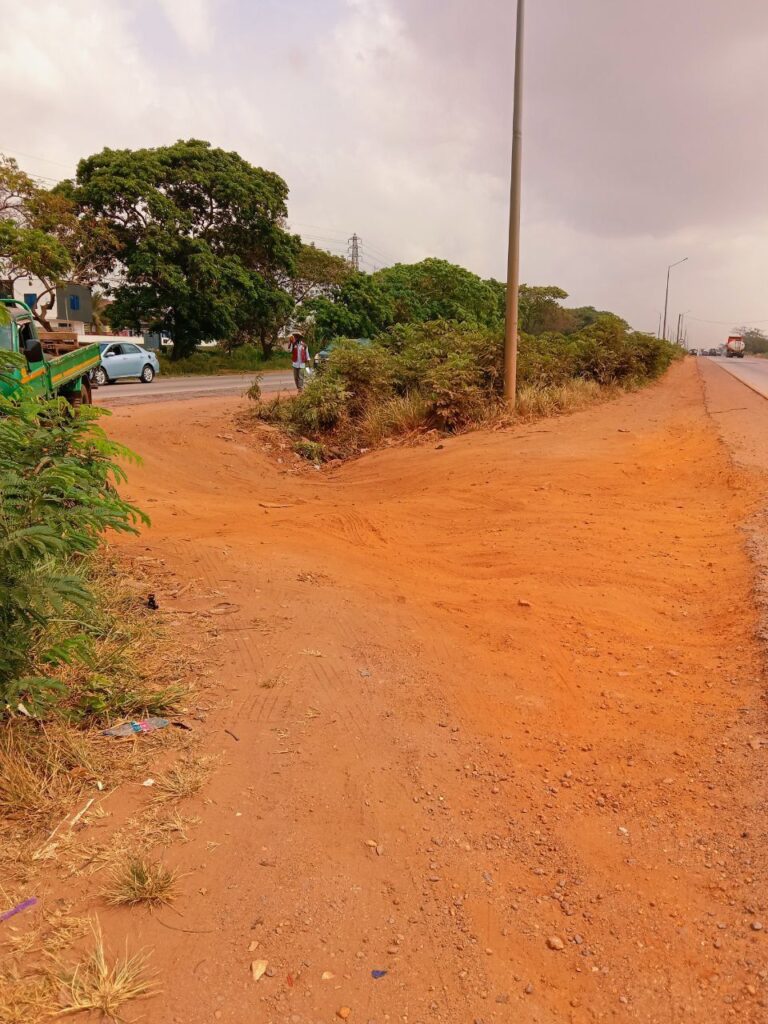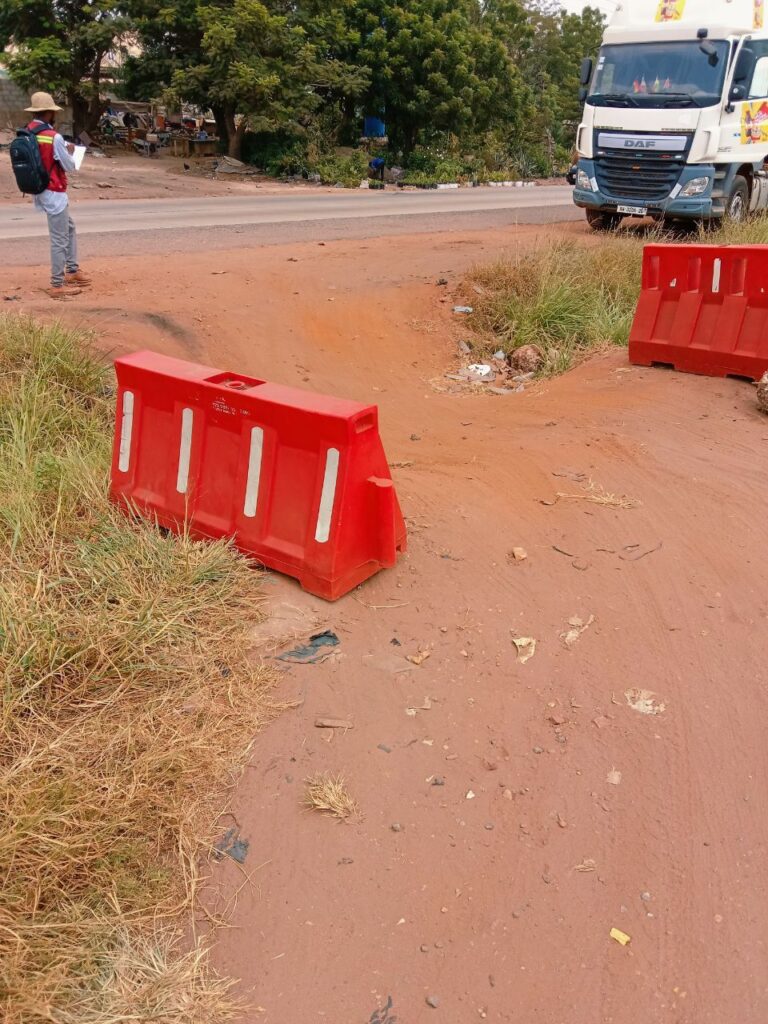Authors: Redeemer Buatsi and Prosper Midedzi || NGIJ-Media Foundation for West Africa (2021 Cohort)
In 48 months, more than 136 people died on the Accra Tema motorway. With the current road state, more people are still at risk of their lives every day, and they can avoid serious injury or death.
According to the Motor Traffic and Transport Department, at least 39 people died in accidents in 2018, while 150 were injured. On the roads, 107 incidents were also recorded in 2018. Out of 75 accidents that were recorded in 2019, 91 people sustained injuries and 36 died.
Data on motorway accidents also show that 22 people died and 74 were injured in the 80 accidents that were recorded in 2020. Reports indicate that there were at least 105 motorway accidents in 2021, resulting in 39 deaths and at most, 39 injuries.
The road, which was 57 years old, showed more weariness than a woman fifty-seven years old. As if screaming for help, it showed signs of fatigue and lay helplessly, as heavy trucks drove by with huge tires.
This cracked up the large potholes and other problems that had been left over 50 years of neglect and insufficient repairs.
The weather has left the current condition of the motorway in a state of flux and it is uncertain what its future holds.
The motorway is no longer a fast and easy route to Accra or Tema. It has been ravaged by serious potholes and cracks that drivers must navigate to return home.
Every time they choose to use the Tema–Accra motorway, users face obstacles. On the 19-kilometre stretch between Accra and Tema, drivers must carefully navigate around 400 potholes.
This is far more than what it takes to complete a game of chess. The dangers that come with it are much more severe. Tema Motorway, Ghana’s only motorway linking the Volta Region, Tema metropolis and Togo by road to the capital of the country is the Tema motorway.
Today’s motorway is like a circus. Passengers bump up every second the car hits a crack.






Cracks and potholes
Investigative reporters, Redeemer Buatsi and Prosper Prince Midedzi walked from Tetteh Quarshie roundabout where the motorway begins to Tema tollbooth within a period of two and half days.
The reporters recorded over 417 potholes on both the Accra-Tema and Tema-Accra lanes. Many potholes had iron rods sticking out of them, but others were exposed to the ground.
The reporters observed cars trying to navigate around potholes and edging dangerously towards other road users.
Accidents, dangers
The bitumen on the concrete road has separated from the concrete surface like oil from water.
This created huge bumps similar to those created by unprofessional speed bumps by members of the community on busy roads in their area.
It is not clear what engineering knowledge was used to fix the concrete cracks using bitumen.
It is clear, however, that such thinking has led to increased discomfort and added hurdles for drivers on the road.
Redeemer and Prosper recorded 432 patches in their two-and-a-half-day eyewitness inspection. Some have become speed bumps while others have developed into larger and more dangerous potholes.
U-Turns
Over 55 illegal U-turns were also reported by the reporters during the two-and-a-half-day survey.
Driving a U-turn is a 180-degree turn to reverse the journey’s direction. Experts strategically position U-turns on the roads to protect road users and others who make them.
Some drivers make illegal U-turns on the motorway, which violates highway traffic regulations. This also poses a great danger to drivers and other road users.
Other commuters who do not know about U-turns may not be able to take safety precautions, which could lead to an accident.
Illegal Bus Stops
Motorcyclists using the motorway park incongruously on the roads. Reporters recorded 33 illegal bus stops along the motorway.
Taxi drivers and commercial drivers, also known as “trotro”, park anywhere they like on the highway to collect and drop off passengers. Other car drivers can also park anywhere on the highway.
An Okada rider at KICC spot said that every week there is an accident because of illegal bus stops. Government attention is urgently needed to end this threat to the highway.
One of the ‘trotro’ drivers, Mr Kwame Asare, said that if he didn’t stop at illegal bus stops to pick up passengers, his colleagues would. ‘We are all doing the wrong thing for survival’, he said.
Road Traffic Act
Section 19 of the Road Traffic Act (Act 683) says: “A person who parks their motor vehicle entirely or partially on the verge of a road or on any land between two carriageways, which is not a footway or pedestrian crossing, or in a place reserved to the physically handicapped, commits an offense.”
This offense will result in a summary conviction and a sentence of “a summarized conviction to a fine not surpassing 250 penalty units (Ghc3000), given that one penalty unit equals Ghc12 or to a term not exceeding 12 months or both.” However, the authorities and police have not enforced the law, even though they are aware that motorists continue to violate it.
The reporters met with a police officer, who had taken a “trotro driver” at the ‘underbridge’. This is one of those spots where drivers can stop randomly. The police officer stated that the car had been taken into custody. However, others were doing the wrong thing, but he was the only one present, making it difficult.
Ghana Highway Code
The Ghana Highway Code of Conduct Section 35 states that “Leave enough distance between you and the vehicle in the front so you can pull up safely if the vehicle suddenly slows down or stops abruptly.” It is best to not get closer than the total stopping distance. In good conditions, however, a gap of 1 yard per mph may be sufficient on open roads. The gap should be wider on wet roads. If an overtaking vehicle fills in the gap, you should drop back.
Responding to section 35 of the Ghana Highway Code of Conduct, Inspector Kingsley Addo, head of the Accident Investigative Unit of Tema Motor Transport and Traffic Department stated that “Most motorists don’t know how to use the motorway.”
In November 1965, the Accra-Tema motorway opened to traffic to connect Tema and Accra. It was constructed under the leadership of H.E. Dr Kwame Nkrumah (the first president of Ghana). It was built in the style of the Autobahn, a German motorway.
Rehabilitation
The motorway was rehabilitated to its original condition in August 2009. It cost 500,000 cedis. Part of the motorway was to be reconstructed using epoxy cement. Eight weeks of rehabilitation were required to remove and replace concrete slabs that had become damaged and repair the asphalted shoulder of the motorway. The motorway was made safe for motorists in 2009 after the rehabilitation work.
Plans for expansion
After years of public outcry over the poor condition of the motorway, many promises have been made to improve it in the past. Recently, Hon. Kwasi Amoako Atta claimed that the motorway would be redeveloped to become a 10-lane urban highway, with 5 new interchanges.
The highway is still unfinished as of January 2023. Potholes continue to develop every day and are being repaired with bitumen.
According to Empire Parking Lot services (a construction and repairs company based in the United States), it is cheaper to repair asphalted roads over concrete ones, but it is technically not safe to repair concrete floors with bitumen since these are completely different materials.
Efforts to get the roads ministry and the Urban roads department to comment on the issue proved futile.
However, one thing is clear, the Tema-Accra motorway continues to deteriorate, posing serious threats to the thousands of Ghanaians who ply the road daily.












































